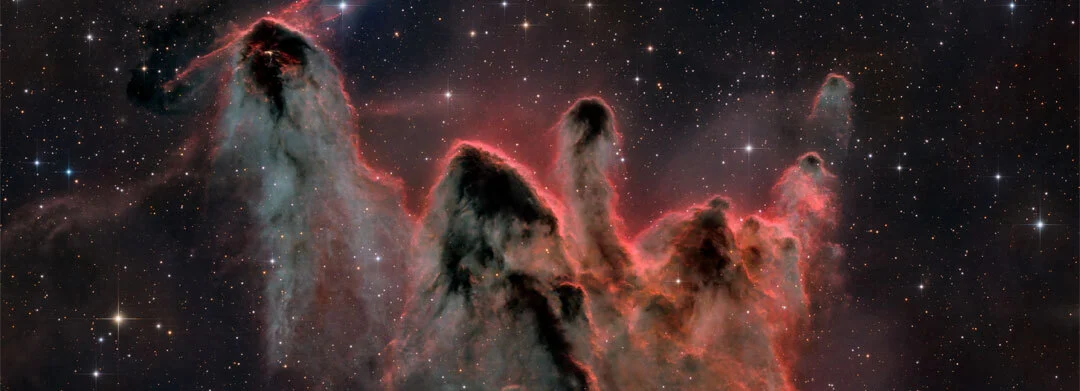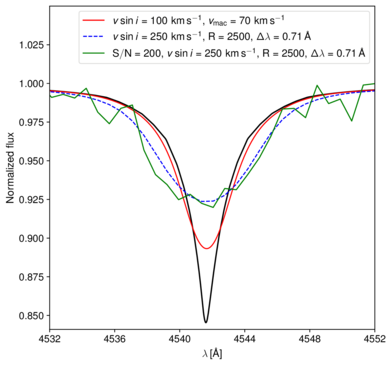
Daniel Galán Diéguez
Instituto de Astrofisica de Canarias
Simulating the effects of rotation, resolution,
and noise on stellar spectra

SpecBlur is an intuitive and flexible Python tool designed to simulate and study the effects of various physical and observational factors on stellar spectra. This script enables researchers to modify spectra systematically, making it an essential resource for exploring how rotation, turbulence, resolution, and noise influence spectral features.

SpecBlur generates outputs tailored to the user's requirements, including degraded spectra and relevant metadata about the applied transformations. The left figure reflects SpecBlur capabilities, showing a 35000K synthetic spectrum degraded in S/N, braodening and resolution. By providing these functionalities, SpecBlur equips astronomers with a versatile tool to simulate observational conditions and study their impact on spectral diagnostics, such as line ratios and velocity measurements.